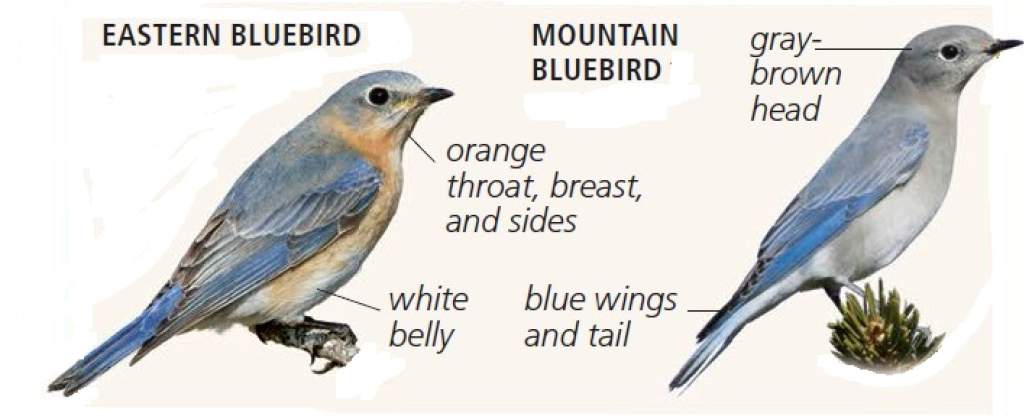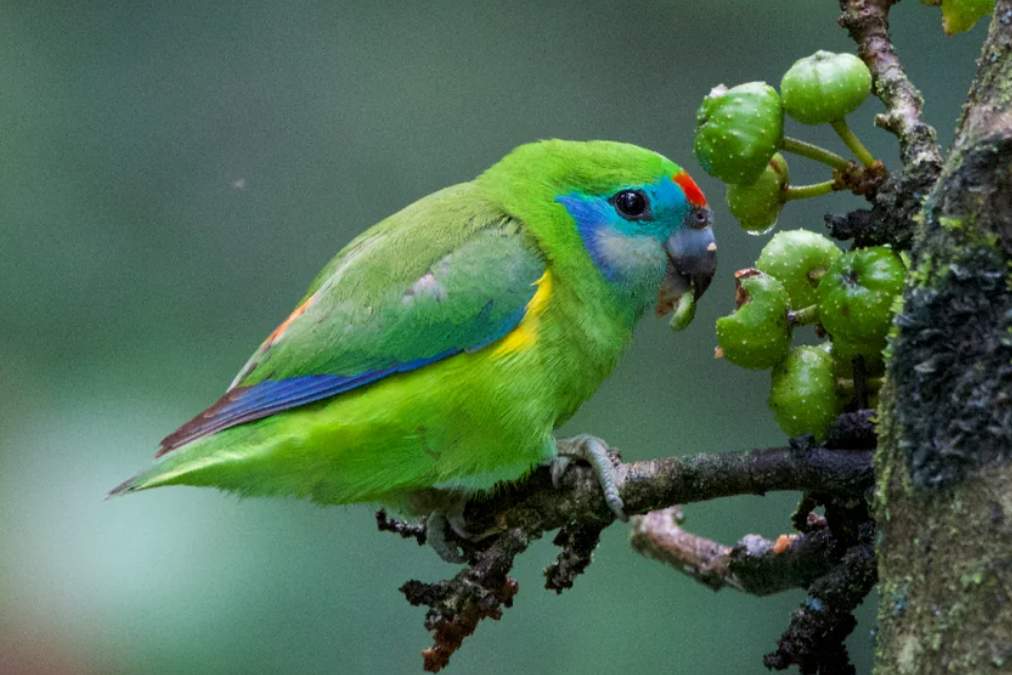Comparing Eastern Bluebird vs Western Bluebird
- Description: The Eastern Bluebird’s vibrant blue and chestnut body is a beloved sight in eastern North America, especially after the remarkable comeback of the species in the past 40 years. After much of the bird’s habitat was eliminated by agriculture in the mid-1900s, volunteers offered the bluebird nest boxes as alternatives to their tree cavities, and they took to these like ducks to water. The Eastern Bluebird’s mating system involves males seeking (or not minding) multiple partners.
-
Western Bluebird is very similar to its close relative, the Eastern Bluebird, but with a distribution restricted to the western part of the continent. The vibrant colors of male Western Bluebirds are endowed with stunning plumage—dazzling blue upperparts and deep chestnut-orange underparts. Unlike the Eastern Bluebird, the Western Bluebird has a brown back and a completely blue hood. Females and juveniles are harder to differentiate, but their ranges are quite dissimilar.

Eastern Bluebird vs Western Bluebird
Eastern Bluebird vs Western Bluebird Call & Song
- Eastern Bluebird’s main song is a melodious series of soft, whistled notes; churr-wi or churr-li; songs for mating and asserting territoriality. Its song is one of the most popular bird songs on youtube.
-
Western Bluebird vocalizations are similar to those of the Eastern Bluebird; call soft few, few, or fewrr-fewrr. However, its song is a pleasant, soft series of churring notes, all strung together, often given at dawn.
Eastern Bluebird vs Western Bluebird Nesting
- Eastern Bluebird Nesting: Cavity nester, in trees or man-made boxes; nest of grass lined with grass, weeds, and twigs; uses old nests of other species; 3–7 eggs; 2 broods; February–September.
-
Western Bluebird Nesting: Shallow cup of dry grass and feathers in a natural tree cavity or old woodpecker cavity. The bird lays 4–6 eggs; even 1–2 broods; in March–July.
Eastern Bluebird vs Western Bluebird Feeding
- Eastern Bluebird Feeding: The bird feeds on insects like grasshoppers, and caterpillars in the breeding season; in winter, also take fruit and plants.
-
Western Bluebird Feeding: Western Bluebird feeds mainly on insects. However, in the breeding season, the bird eats berries, such as juniper. In the colder months, the Western Bluebird hunts from low perches, from which it takes insects from the ground or air.
Eastern Bluebird vs Western Bluebird Distribution
- Eastern Bluebird found in eastern Canada and the eastern US, where it lives in clearings and woodland edges; occupies multiple open habitats in rural, urban, and suburban areas: woodlands, plains, orchards, parks, and spacious lawns. Breeds and winters across the eastern half of the United States.
- Western Bluebird during the breeding season, the bird found in open woodlands (coniferous and deciduous) and forest edges. However, in winter, it moves to lower elevations and occupies open and semi-open areas such as pinyon-juniper forests and deserts. This bluebird is a partial migrant; northern birds move south where southern breeders reside.
Other Facts
-
Eastern Bluebird
- Subspecies: 7 Distinct Subspecies
- Status: Secure
- Social: Flocks
- Weight: 11⁄16 oz (30g)
- Wingspan: 10 –13in (25–33cm)
- Length: 6–8in (15–20cm)
- Species: Sialia sialis
- Lifespan: 8–10 years
- Family: Turdidae
- Order: Passeriformes
- Flight: shallow wing beats; slow and easy.
-
Western Bluebird
- Subspecies: 6 Distinct Subspecies
- Status: Secure
- Social: Winter Flocks
- Weight: 7⁄8 –11⁄16 oz (25–30 g)
- Wingspan: 11–13in (29–33cm
- Length: 6–7in (15–18cm)
- Species: Sialia Mexicana
- Lifespan: Up to Seven years
- Family: Turdidae
- Order: Passeriformes
- Flight: Slow and easy-looking, with shallow wing beats.

Identification of Eastern Bluebird




Identification of Western Bluebird










